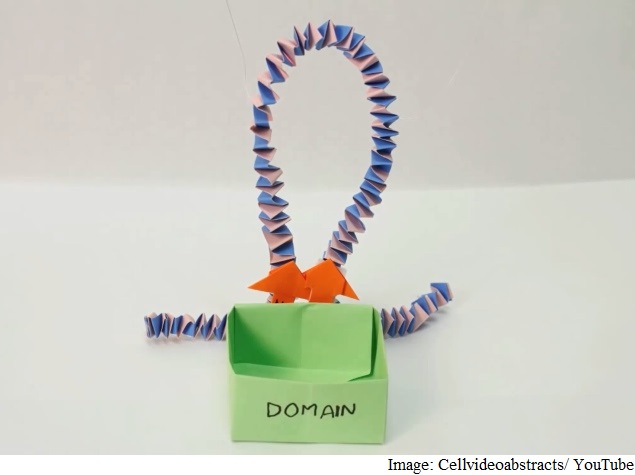- Home
- Science
- Science News
- 3D Maps Find Loops in Human Genome
3D Maps Find Loops in Human Genome

The five-year project to identify the loops in the human genome was a collaboration between researchers at Harvard University, Baylor College of Medicine, Rice University and the Broad Institute of Harvard and MIT.
Loops form when two bits of DNA that are far apart in the genome sequence end up in close contact in the folded version of the genome in a cell's nucleus.
Researchers used a technology called "in situ Hi-C" to collect billions of snippets of DNA that were later analysed for signs of loops. The team found that loops and other genome folding patterns are an essential part of genetic regulation.
"More and more, we're realising that folding is regulation," said study co-first author Suhas Rao, a researcher at Baylor's Centre for Genome Architecture.
"When you see genes turn on or off, what lies behind that is a change in folding. It's a different way of thinking about how cells work," said Rao.
"Our maps of looping have revealed thousands of hidden switches that scientists didn't know about before. In the case of genes that can cause cancer or other diseases, knowing where these switches are is vital," co-first author Miriam Huntley, a doctoral student at Harvard's School of Engineering and Applied Sciences, said.
"The new maps allow us to really see, for the first time, what folding looks like at the level of individual genes," said senior author Erez Lieberman Aiden, assistant professor of genetics at Baylor.
The research appears in the journal Cell.
Get your daily dose of tech news, reviews, and insights, in under 80 characters on Gadgets 360 Turbo. Connect with fellow tech lovers on our Forum. Follow us on X, Facebook, WhatsApp, Threads and Google News for instant updates. Catch all the action on our YouTube channel.
Related Stories
- Samsung Galaxy Unpacked 2025
- ChatGPT
- Redmi Note 14 Pro+
- iPhone 16
- Apple Vision Pro
- Oneplus 12
- OnePlus Nord CE 3 Lite 5G
- iPhone 13
- Xiaomi 14 Pro
- Oppo Find N3
- Tecno Spark Go (2023)
- Realme V30
- Best Phones Under 25000
- Samsung Galaxy S24 Series
- Cryptocurrency
- iQoo 12
- Samsung Galaxy S24 Ultra
- Giottus
- Samsung Galaxy Z Flip 5
- Apple 'Scary Fast'
- Housefull 5
- GoPro Hero 12 Black Review
- Invincible Season 2
- JioGlass
- HD Ready TV
- Laptop Under 50000
- Smartwatch Under 10000
- Latest Mobile Phones
- Compare Phones
- Huawei Nova 15
- Huawei Nova 15 Pro
- Huawei Nova 15 Ultra
- OnePlus 15R
- Realme Narzo 90x 5G
- Realme Narzo 90 5G
- Vivo S50 Pro Mini
- Vivo S50
- Asus ProArt P16
- MacBook Pro 14-inch (M5, 2025)
- Huawei MatePad 11.5 (2026)
- OnePlus Pad Go 2 (5G)
- Huawei Watch 10th Anniversary Edition
- OnePlus Watch Lite
- Acerpure Nitro Z Series 100-inch QLED TV
- Samsung 43 Inch LED Ultra HD (4K) Smart TV (UA43UE81AFULXL)
- Asus ROG Ally
- Nintendo Switch Lite
- Haier 1.6 Ton 5 Star Inverter Split AC (HSU19G-MZAID5BN-INV)
- Haier 1.6 Ton 5 Star Inverter Split AC (HSU19G-MZAIM5BN-INV)

















